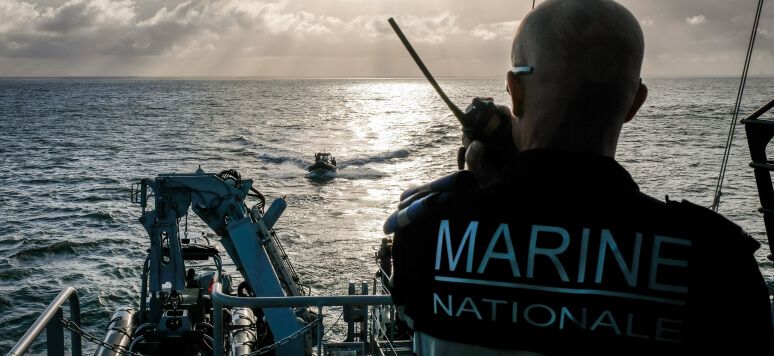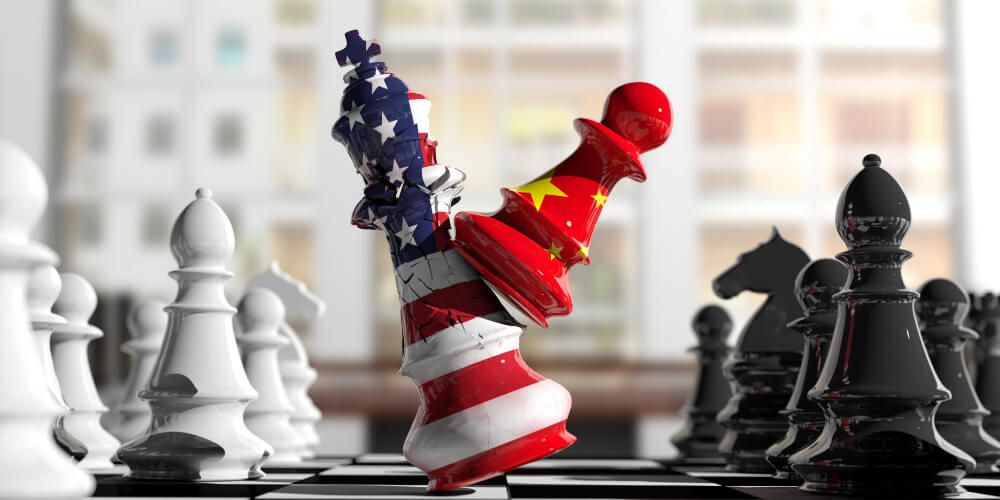The military coercion exercised by the People’s Liberation Army (PLA) against Taiwan has increased significantly since 2020. Aerial maneuvers and amphibious assault exercises on the beaches of China’s southern provinces have become more frequent, with Beijing seeking to send a strong strategic signaling. These maneuvers have four main objectives: to intimidate the population, to test the Taiwanese army, to normalize the negation of the median line demarcating the Taiwan Strait, and above all, to support the PLA build-up.
China’s response to the visit of the speaker of the US House of Representatives, Nancy Pelosi, to Taiwan in August 2022, during which the PLA conducted live-fire exercises, including the firing of eleven ballistic missiles, in six areas surrounding the island’s international air- and waterways, marked a new threshold. Beyond the increasingly acute episodes of tension, the conquest of the island now clearly appears to be the PLA’s preferred hypothesis of major engagement, guiding its capability strategy and its operational planning. Several scenarios exist, ranging from an intimidation crisis to a full-scale invasion, with intermediate scenarios including a maritime blockade or the capture of Taiwanese islets (whether close to Mainland China or not).
However, the PLA lacks certain capabilities that are essential for the launch of an invasion, such as tanker aircraft, amphibious assault ships, and anti-submarine warfare capabilities. However, most of these shortcomings should be overcome by 2027. Regarding Taiwan’s supports, it is generally accepted that the PLA’s objective in the event of an attack on the island would be to prevent allied forces (the United States, Japan, etc.) from intervening by keeping them at a distance through an anti-access/area denial (A2/AD) strategy, focusing on the temporary or permanent neutralization of their means of projection (bases, naval groups, but also information and communication systems) via long-range strikes and non-kinetic means (cyber, electronic warfare).
The Adaptation of the Taiwanese Armed Forces
Historically, the Taiwanese army’s mission was to prepare for the reconquest of the Chinese mainland. However, the democratic reform of the country in the 1990s, the progression of Taiwanese identity in society, and the spectacular growth of the People’s Republic have made this objective obsolete. With the balance of power resting strongly in Beijing’s favor, Taipei has revised its military strategy, taking a more defensive stance.
Taipei is now promoting an asymmetric strategy that is supposed to deter any Chinese invasion by relying on capabilities designed to impose an exorbitant human, material, and financial cost on Beijing. However, Taiwan is struggling to execute this shift in approach and continues to emphasize the development and acquisition of expensive and complex projection equipment (multirole combat aircraft, guided-missile frigates, MALE UAVs, etc.), whereas an asymmetric defense approach would call for investment in a capability mix strengthening numerous types of equipment that are inexpensive and easy to produce locally (surface-to-air missiles, naval mines, etc.).
Although the context is admittedly very different, the successes of the Ukrainian defense strategy have been observed up-close and call for the kind of shift described above. The war in Ukraine has also triggered an in-depth reflection on the resilience capacity of Taiwanese society. Thus, the government and parliament have undertaken to strengthen both military service and the reserve force.
A Major Strategic Impact on the United States and Its Allies
For the United States, Taiwan is of major strategic value due to its essential role in global supply chains for high-tech industries, but also and above all due to its geographical position as the midpoint in the “First Island Chain”. President Biden has stated three times, in 2021 and 2022, that the United States would defend Taiwan in the event of an attack. Control of the island would provide Beijing with a base for its nuclear submarines, which would allow them to rapidly fan out across the Pacific Ocean and thus pose a threat deemed unacceptable by the United States. In addition, any failure to come to Taiwan’s aid would seriously undermine the United States’ credibility and its defense commitments to its allies and partners.
The United States’ strategy relies first of all on the principle of providing Taiwan with the means to defend itself, or at least to absorb the initial shock. Secondly, it consists in maintaining access to the theater in the face of China’s area denial capabilities. To do so, the United States maintains a network of military bases, which may be sovereign (Guam) or in territory controlled by its partners, in particular Japan, South Korea, or the Philippines, with whom the United States signed an agreement in February 2023 to reinforce its military presence there.
Washington is also seeking to deepen its politico-military ties with Taiwan, by boosting the quality and quantity of arms supplies and by providing assistance with military training. To this end, the United States increased the number of military trainers deployed in Taiwan from 30 to 100, and then to 200. In addition, the Michigan National Guard is set to train a contingent of Taiwanese troops.
The implications for Europe
A crisis in the Taiwan Strait would have severe consequences for Europe and for global stability, far beyond those caused by the war in Ukraine. European trade with East Asia (which accounts for around a quarter of its total trade) would be severely disrupted, whether in terms of exports or supplies of raw materials (rare-earth elements) and manufactured products (including semiconductors), posing serious questions in terms of maritime security, among other things.
Any kinetic military action by China against Taiwan would necessarily spark reactions from Europe, in particular in the diplomatic, economic (sanctions), cybernetic, information (fight against disinformation), and space fields. Individually and collectively, European states must be prepared for such scenarios.
The question of military engagement within a coalition must also be posed. Beyond air-sea action in the strait—which would inevitably be limited given the distance and the balance of power—the most important contribution that Europe could make would probably be to engage in regions neglected by the United States, including the European area itself, and the continuum between Suez and Malacca.
To prevent us from getting to that point, it is necessary to strengthen—and harmonize—a dissuasive discourse toward Beijing, reminding it that a unilateral change to the status quo would be unacceptable. It is also up to Europe to call for moderation in the American domestic debate on China, which could itself lead to excesses.






